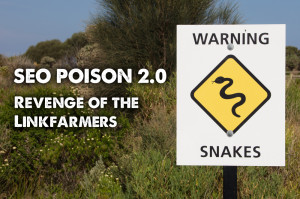You may have all the technology and expertise in the world at your disposal, but do you have this crucial element to SEO, content and social media success?
 Do you have a fantastic SEO platform? Or you do have an amazing agency like PPC agency in Austin, to help you with your SEO? A beautiful piece of software, with all the data dots connected, and all the keyword bells and social media whistles that you could ever ask for? If your brand has a culture that is forward-thinking enough to recognize how crucial a tool like this is to the success of your digital marketing, then I hope the answer is yes.
Do you have a fantastic SEO platform? Or you do have an amazing agency like PPC agency in Austin, to help you with your SEO? A beautiful piece of software, with all the data dots connected, and all the keyword bells and social media whistles that you could ever ask for? If your brand has a culture that is forward-thinking enough to recognize how crucial a tool like this is to the success of your digital marketing, then I hope the answer is yes.
But that’s not the only thing that demands your precious marketing dollars. Are you promoting your posts to precision-targeted audiences on Facebook? Gaining a following on Twitter by advertising your best stuff to key influencers? Utilizing all the many paid search tools to drive traffic to your brilliant content? Does your site position you as a leader in your industry? Looking for a team of skillfull web designers? Go to https://sandcastle-web.com/services/website-design/ for more details.
All these magnificent things are not cheap, but they are certainly worth it . . . IF you’ve also made another important little investment. An investment in great people.
Don’t underestimate what it takes to win in SEO, Social, & Content Marketing
It’s no secret that the biggest bottleneck in content marketing (and by extension, SEO and social) is TIME. It takes a huge amount of time to develop truly great content that delivers value, ranks in search, and resonates throughout social media. This is one of the biggest stumbling blocks that brands hit when developing their content marketing strategies and social plans. Most brands just don’t have enough people to actually execute what is needed to outpace competition and gain more ground in their markets and to achieve Sustainability In Marketing.
I mean, on their own each thing you do for digital content doesn’t seem very daunting, and this is part of the perception that makes content ‘seem’ easier than it actually is. Seriously, how long does it take to write a 500 word blog post? But what about 4 or 5 of them? Maybe add a whitepaper in there, too? Throw together a handful of tweets every day? A few Facebook posts? Couple of things for LinkedIn? Pic for Instagram? And let’s not forget the time needed to crush it on YouTube. It adds up fast. Best software for posting to Google My Business automatically will allow you to share photos, announce sales or specials, showcase new products, and list upcoming events.
But that’s just reality, isn’t it? I mean, you can’t just ‘buy’ time, can you?
 Yeah, actually, you can buy time.
Yeah, actually, you can buy time.
What if I told you for the low, low price of a single person’s salary, you could flat-out BUY dozens more hours every week? Because that’s exactly what you’re doing when you hire people. Every person you bring on is paying your brand back with their time. All of it. Every day.
Hiring great people gives you their time, their expertise, and their knowledge to execute your strategies and tactics. Without great people to action those ideas and plans, they’re nothing more than decorations on Powerpoint slides.
1+1 = 2, mostly. Sometimes it’s 3. Possibly 4?
This is really basic math. When you go from one content writer to two, that’s instantly doubling the amount of content you can churn out. That’s two times the amount of original, fresh, relevant and valuable content for your brand to rank in search and share in social.
Yeah, it’s that simple, and it scales in huge ways. Once those two writers begin to develop synergies, sharing valuable research, conducting brainstorming sessions, etc, you’ll find that your content team becomes more than just the sum of its parts. They now have the support they need to do more than they could on their own.
Investing in people pays the biggest dividends of any dollar you spend in SEO, social, and content. People give you the ability to action what you’ve been told by all the data that you have in your analytics tools and platforms, and put in motion all the advice coming from your agencies and consultants. Great people and their time are the best things you can buy for your brand.

















